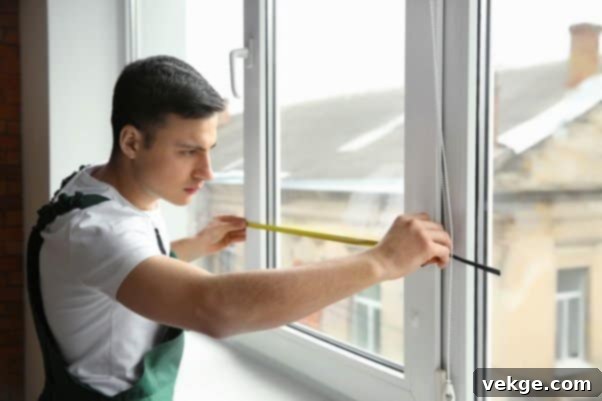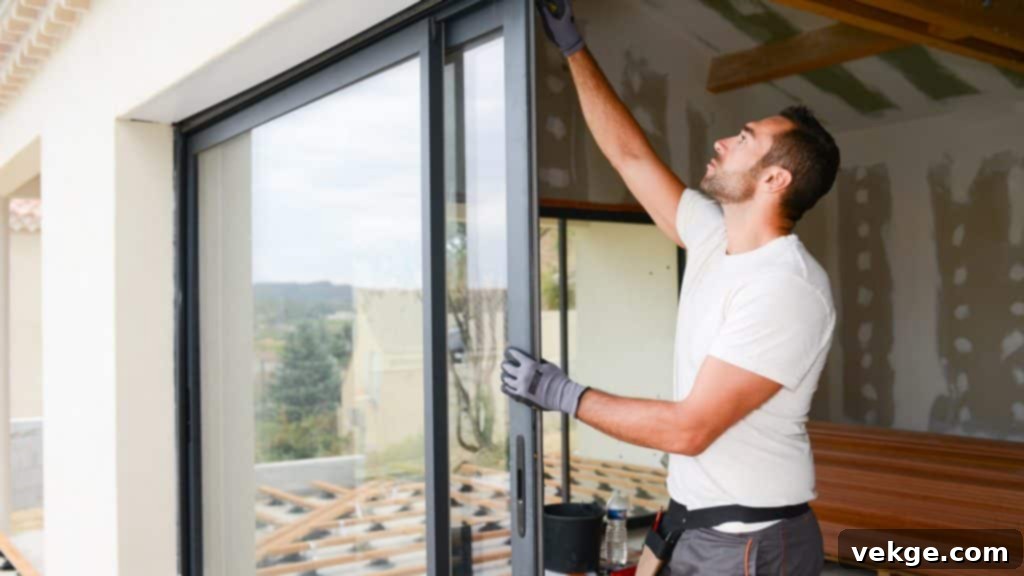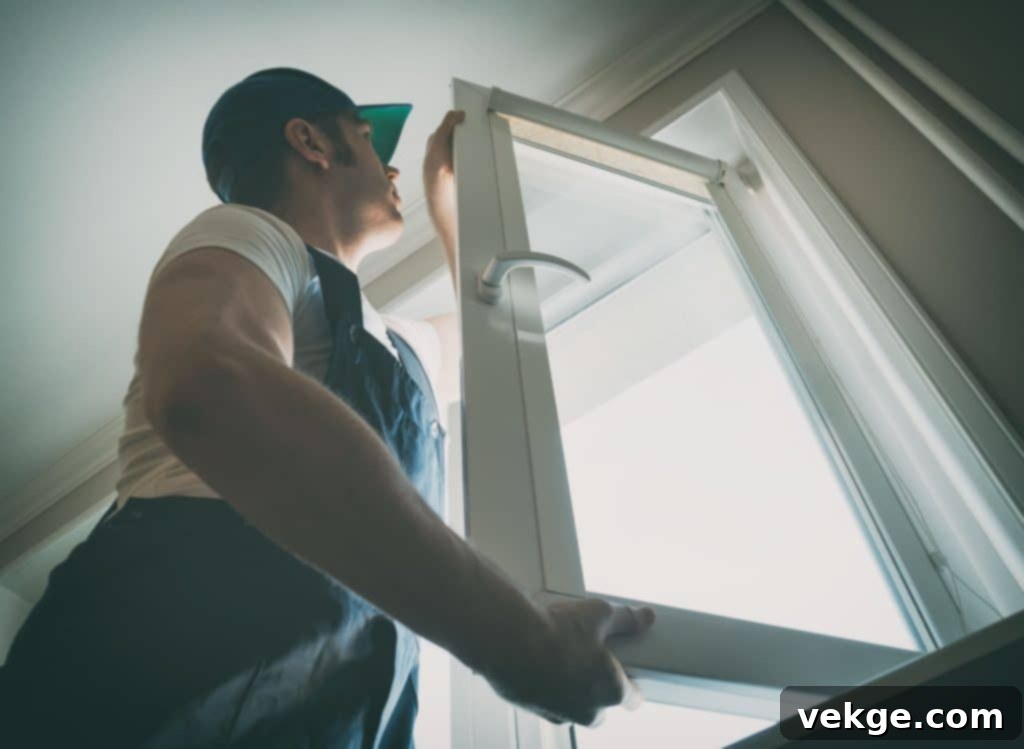How Long Does Window Installation Take? A Comprehensive Guide to Your Home Upgrade Timeline
Embarking on a home renovation project can be an exciting journey, and the prospect of brand-new windows can truly transform your living space. Windows, while sometimes overlooked, play a pivotal role in your home’s aesthetic appeal, energy efficiency, and overall comfort. A strategic upgrade can not only refresh your home’s look but also significantly enhance its performance and value. For many homeowners, a key question arises early in the process: “How long does window installation take?” Understanding the typical timeline is essential for effective planning, minimizing disruption, and ensuring a smooth, successful upgrade to your home.
This guide will demystify the window installation process, breaking it down into manageable phases and outlining the various factors that influence its duration. Whether you’re replacing a single window or undertaking a whole-house transformation, knowing what to expect at each stage will help you prepare and make informed decisions, ensuring your investment truly pays off.
Planning and Preparation: Laying the Foundation for Your Window Project

Before any physical work begins, a comprehensive planning and preparation phase is crucial. This initial stage involves several key steps that set the groundwork for your entire window replacement project.
Choosing the Right Windows for Your Home
The first significant decision involves selecting the ideal windows. This isn’t just about aesthetics; it encompasses materials, styles, and energy efficiency ratings. You’ll consider options such as:
- Materials: Vinyl, wood, fiberglass, aluminum, or composite, each offering different benefits in terms of durability, maintenance, and insulation.
- Styles: Double-hung, casement, bay, bow, slider, picture, or custom shapes, depending on your home’s architecture and your functional needs.
- Energy Efficiency: Look for ENERGY STAR® certified windows, paying attention to U-factor, Solar Heat Gain Coefficient (SHGC), and air leakage ratings. These factors significantly impact your home’s comfort and utility bills.
Professional Consultation and Accurate Measurements
Once you have an idea of your preferences, it’s time to connect with local experts. Professional window contractors can provide invaluable guidance, helping you navigate the vast array of options and ensuring your choices align with your home’s structure and local climate. During this consultation, precise measurements of your existing window openings will be taken. Accuracy here is paramount, as even slight errors can lead to delays and additional costs during installation. If you’re looking into window installation Arlington, it’s particularly advisable to consult with specialists who are familiar with the region’s specific architectural styles, local building codes, and climate-related requirements.
This initial planning phase, from making your selections to receiving quotes and confirming orders, can take anywhere from a few days to several weeks. The timeline largely depends on how quickly you make decisions, the complexity of your chosen windows (custom designs take longer), and the current lead times from manufacturers.
The Role of a Designer: When to Consider One
While engaging a designer for window replacement isn’t always necessary, it can be highly beneficial in certain situations, especially for complex projects or if you have specific aesthetic goals. Consider a designer if:
Aesthetic Integration
If your home boasts a distinct architectural style (e.g., Victorian, Mid-Century Modern) or you’re striving for a very particular visual appeal, a designer can ensure your new windows blend seamlessly with, or even enhance, your home’s existing character. They can help choose frames, grilles, and glass types that complement your home’s design.
Custom Solutions
For unique window shapes, unusual sizes, or non-standard placements, a designer can be instrumental in creating functional and visually striking custom solutions. This is especially vital in historic homes or properties where standard window dimensions simply won’t suffice, or if you desire a truly unique design element.

Energy Efficiency and Functionality Optimization
Designers possess expertise in optimizing for energy efficiency. They can recommend the best window types, glass coatings, and installation methods based on your home’s orientation, local climate, and specific insulation needs, ensuring maximum thermal performance.
Complex Projects and Structural Changes
If your window replacement involves structural modifications, such as enlarging existing openings, creating new window spaces, or converting window types (e.g., from a standard window to a bay window), a designer can ensure these changes are structurally sound, aesthetically pleasing, and compliant with all building codes.
Ultimately, the decision to hire a designer depends on the scope and complexity of your project and your comfort level with making significant design decisions independently. If you choose not to work with a designer, selecting a highly reputable and experienced contractor becomes even more critical, as they will need to provide comprehensive guidance and ensure all technical requirements and building codes are met.
Permits and Local Regulations
Depending on your location and the extent of your window replacement project, you may need to obtain permits. This is particularly true if you are altering the size or location of window openings, or if you live in a historic district. A professional contractor, especially one experienced in areas like Arlington, VA, will be familiar with local regulations and can guide you through the permitting process, or even handle it on your behalf. Factor in the time for permit application and approval, which can range from a few days to several weeks, to avoid any unexpected delays.
The Installation Timeline: What to Expect During the Process
Once the planning is complete and your new windows have arrived, the physical installation begins. This is often the phase homeowners are most curious about. Generally, installing a single window can take anywhere from 30 minutes to a full day, but this broad estimate is influenced by several critical factors.
Understanding Installation Types: Full-Frame vs. Insert Replacement
The type of installation chosen significantly impacts the duration and complexity of the job:
- Insert Replacement (Pocket Installation): This is typically quicker. The new window unit is installed directly into the existing window frame. The old frame, trim, and siding around the window remain largely undisturbed. This method is suitable when the existing frames are still in excellent condition and structurally sound.
- Full-Frame Replacement (New Construction Installation): This is a more extensive process. It involves removing the entire existing window, including the frame, sills, and sometimes even a portion of the surrounding wall materials. This method allows for a completely fresh start, addressing any rot, damage, or structural issues in the rough opening. It also provides an opportunity to improve insulation and flashing around the entire window opening.
A full-frame installation naturally requires more time per window due to the additional demolition, preparation, and sealing work involved. For a typical home, replacing all windows with an insert replacement might take 1-3 days, while a full-frame replacement for the same number of windows could extend to 3-5 days or more, depending on the property’s size and complexity. In Arlington, particularly for those considering window replacement Arlington VA, local regulations and specific building codes might also influence the project’s duration and the methods used, especially if historical preservation guidelines are in effect.
The Day of Installation: A Step-by-Step Overview

On the scheduled installation day, here’s a general sequence of events:
- Preparation and Protection: The installation crew will arrive and prepare the work area. This typically involves laying down drop cloths both inside and outside your home to protect floors and landscaping. Any furniture near the windows will be carefully moved or covered.
- Old Window Removal: The existing window unit is carefully removed. Depending on the installation type, this could be just the sash and frame (insert) or the entire frame down to the rough opening (full-frame).
- Opening Preparation: The window opening is inspected for any rot, damage, or inconsistencies. Any necessary repairs or adjustments to the rough opening are made to ensure a plumb, level, and square fit for the new window. This might include adding insulation or flashing.
- New Window Installation: The new window is carefully lifted into the prepared opening. It’s then meticulously leveled, plumbed, and squared before being securely fastened to the house’s framing.
- Sealing and Insulation: Gaps around the new window are sealed with insulation foam or appropriate materials to prevent drafts and moisture intrusion. Exterior flashing and caulking are applied to ensure a weather-tight seal.
- Interior and Exterior Finishing: New interior trim might be installed, or existing trim reinstalled if preserved. Exterior trim and siding are put back in place, ensuring a clean, finished look.
- Final Checks and Cleanup: The crew will test each new window for proper operation (opening, closing, locking). They’ll then thoroughly clean the installation site, removing debris, old window materials, and any protective coverings.
- Homeowner Walkthrough: Finally, the lead installer will often walk you through the newly installed windows, demonstrating their features and offering tips for maintenance.
Depending on the total number of windows, their size, and the complexity of the installation, this process could be completed in a single day for a few windows or extend over several days for a whole-house replacement.
Key Factors Affecting Window Installation Duration
While the steps are generally consistent, several variables can significantly influence the overall time required for your window installation project:
Number and Type of Windows
It’s intuitive that replacing more windows will take longer. However, the type of window also plays a role. Standard double-hung or slider windows are generally quicker to install than complex bay windows, large picture windows, or custom-shaped windows, which require more precise fitting and potentially structural reinforcement.
Customization and Special Features
Windows with unique designs, custom sizes, specialized glass (e.g., impact-resistant, obscured), or advanced features often have longer manufacturing lead times. This extends the preparation phase before physical installation can even begin.
Condition of Existing Structure and Age of Home
Older homes, while charming, can present unforeseen challenges. Rotted wood, uneven openings, or structural anomalies in existing frames can require additional repair work before new windows can be installed correctly. This extra prep time can significantly prolong the project. A full-frame replacement usually accounts for more time to address these potential issues.
Weather Conditions and Accessibility
Inclement weather, such as heavy rain, strong winds, or extreme temperatures, can cause delays, especially if exterior work is required. Similarly, windows that are difficult to access, such as those on upper floors requiring scaffolding or ladders, or those obstructed by landscaping, will take longer to install safely and efficiently.
Professional Team Size and Experience
The efficiency of the installation crew is a major factor. A larger, experienced team can often complete a project more quickly than a smaller, less seasoned crew. Professional installers are equipped with the right tools and expertise to handle potential issues swiftly, minimizing delays.
Beyond Installation: The Long-Term Benefits of New Windows
Once your window installation is complete, the temporary disruption will be a distant memory, replaced by the lasting benefits of your home upgrade. New, energy-efficient windows can dramatically reduce your heating and cooling costs, improve interior comfort by eliminating drafts and temperature fluctuations, and enhance noise reduction. Aesthetically, they boost your home’s curb appeal and can significantly increase its market value, offering an excellent return on investment. The peace of mind that comes with durable, secure, and beautiful new windows is truly invaluable.
Conclusion
Understanding how long window installation takes is a critical piece of information for any homeowner planning this type of upgrade. While the actual hands-on installation may seem relatively quick, the entire journey, from initial planning and selection to final walkthrough, involves numerous steps and can vary considerably based on individual circumstances and project complexity. By working with a reputable, experienced provider like those specializing in window replacement in Arlington VA, and preparing adequately for each phase, you can ensure your window installation is as efficient, effective, and stress-free as possible. This meticulous approach will ultimately lead to a smoother renovation experience and a more comfortable, energy-efficient, and beautiful home for years to come.
